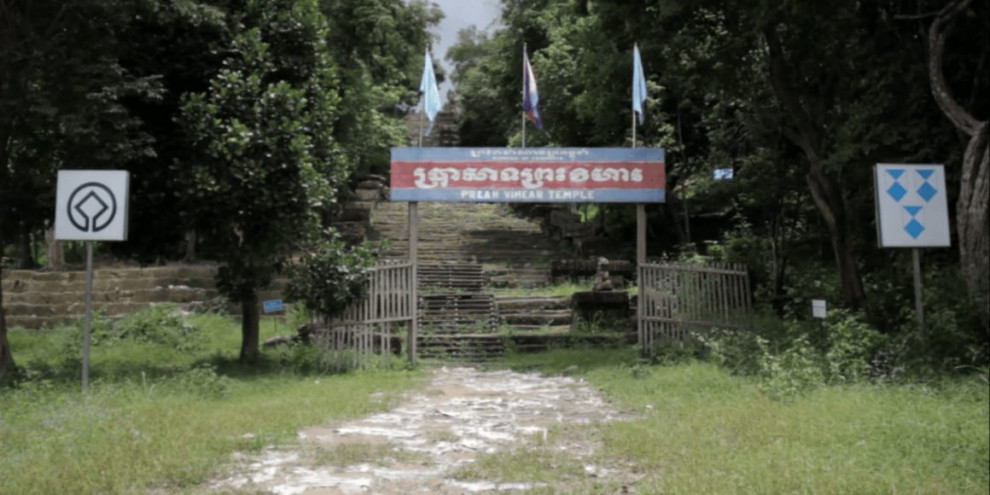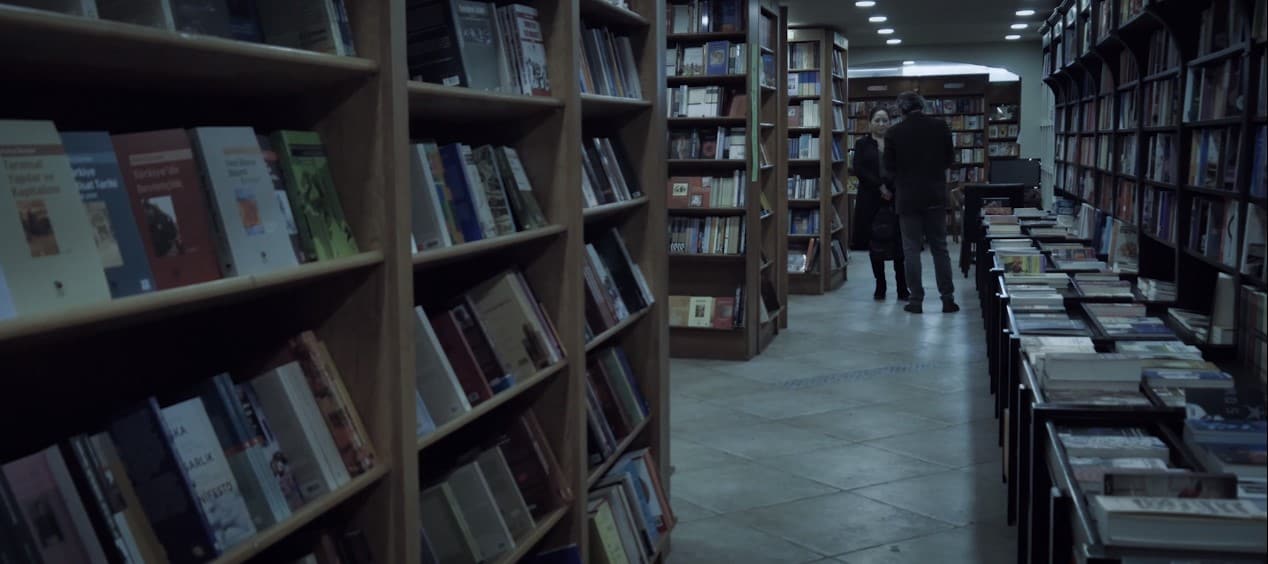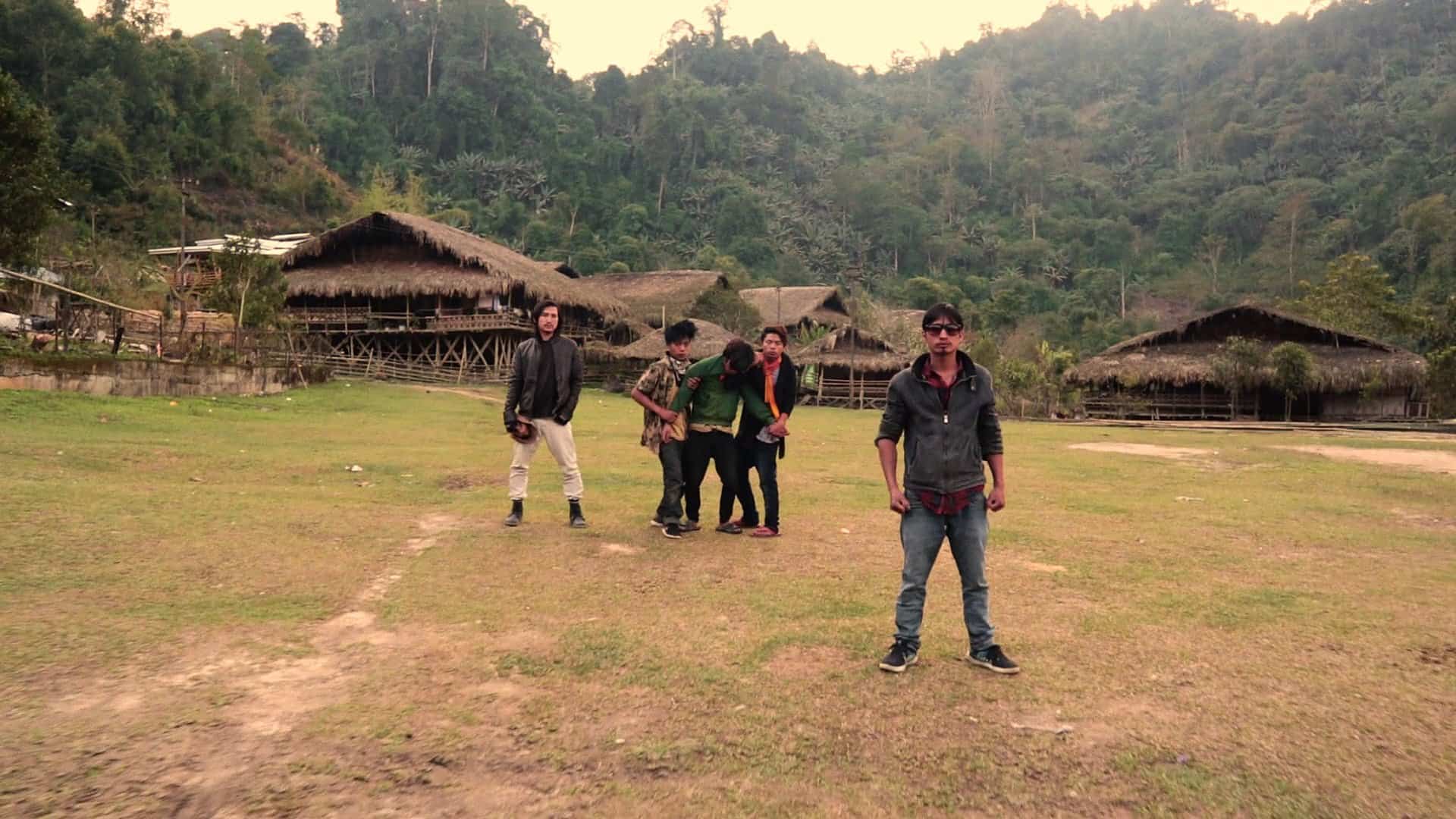“My new journey is coming to an end. Sometimes, I wonder why I did it.”
Even though one might not have the specific oversight of the political and social upheavals in Thailand and Cambodia, the story of the red shirt/yellow shirt divide and the Preah Vihear Temple-debate are symbols of a growing divide. While the former has increased the chasm between rural and urban Thailand as well as its social classes, the latter has resulted in conflicts which have shaken the border region between the two states. By the end of 2010, only months after the red shirt protests opposing the government, the social and political fabric of Thailand could not have been more damaged.
It was during this time – more precisely during New Years Eve 2010 – when Thai filmmaker Nontawat Numbenchapol found the subject for his first documentary. In a statement to his debut feature “Boundary,” the director says he was working on another project when he started thinking about the nature of boundaries and borders. However, it was not so much the geographical definition which he was interested in, but more the emotional and spiritual boundaries within society. While a celebration meant to unite people expecting the promises and possibilities of the new year, Numbenchapol saw a country more divided than ever. And while the positivism of the celebration may fade, the feeling of unrest, upheaval and violence led to the question of how deep the change had been, how visible the scars and the wounds of the past months were.
However, it was not so much the nature of his new film, but also the reaction of the state which answered this question to some extent. Because the film represented a “threat to national security and international relations,” it was banned in Thailand by the state, a rare procedure which made Numbenchapol join the ranks of colleagues like Apichatpong Weerasethakul and Tanwarin Sukkupisit, whose films had also been banned. Ironically, as many journalists pointed out, the same rating system banning these films saw no problem with films like “The Hangover Part II”, a movie whose portrayal of the country and its people is more than just problematic to say the least. Following the director's appeal, “Boundary” was in the end re-edited with some small parts of the film in which the sound had to be muted and eventually the ban was lifted.

For a movie which is essentially about the nature of human division and the social fabric of a country, Numbenchapol's images are often eerily static and quiet. Often combined with long takes of drives through villages, of fields and buildings as well as people moving through the landscape, a viewer may get the impression of a state of shock as the omnipresent condition of the film. Indeed, given the immediacy of the past events, the nature of the conflicts shown in the film, sometimes only present in the words of the people in front of the camera, and the seriousness of the wounds in the landscape, no one should be surprised by this condition. As the camera follows a man re-telling the story of his escape from bombings or a woman breaking out in tears having lost her home and belongings, the bomb craters in the ground reflect the emotional scar tissue of the people the movie shows.
Naturally, words are somewhat flawed in this environment. Numbenchapol's use of long takes, sparse sub-titles and the long silences of the people he interviews represent repercussions of a long, brutal and still ongoing conflict. While some may be invisible on the surface, any attentive viewer will soon look closer at the images, the expressions and the landscape finding traces of these events and what they have left behind.
Most importantly, as the title of the film suggests, the camera looks at the nature the boundaries, physical and psychological, created in the course of time. The director follows a more universal approach concerning these matters, one which is, at the same time, closely connected to the setting of the film, but applicable to the nature of conflicts anywhere in the world. Whether it is about red shirts or yellow shirts, Thai or Cambodian, rural or urban background, there are two aspects “Boundary” focuses on: how much we admit these boundaries as a force in our lives, and to what extent outside factors (politics, religion, class) have emphasized them over time.
Additionally, the atmospheric use of sound and music composed by Katenan Juntimathorn stresses the contemplative nature of the film. Especially in the scenes showing the relationship of people and their environment, the director's approach works best to present the traumatizing effects of the conflict, of the divide between people. At times, the somewhat helpless, sometimes hopeful expression captured in the eye of the camera may show a glimpse of the promise a new year has in store, the possibility of healing the wounds at some point in time.

“Boundary” is an impressive piece of work about the nature of human divisions, about conflict and the wounds these leave behind. While at times difficult to endure, given the nature of the images shown on screen, Numbenchapol still maintains a small glimpse of hope, a curiosity in the people and landscapes he shows. In the end, maybe it is this kind of feeling which may resolve the issue, which may bring forward what unites rather than divides people.
Sources:
1) Director's statement
https://pro.festivalscope.com/film/boundary-1, last accessed on: 08/17/2018
2) Boundary banned (2013)
http://thaifilmjournal.blogspot.com/2013/04/boundary-banned.html, last accessed on: 08/17/2018
3) Brzeski, Patrick (2013) Thailand Bans Local Documentary ‘Boundary'
https://www.hollywoodreporter.com/news/thailand-bans-local-documentary-boundary-444719, last accessed on: 08/17/2018
4) Quadri, Vasachol (2013) ‘Boundary' Director Nontawat Numbenchapol on the Censorship Controversy
https://bk.asia-city.com/movies/article/interview-director-nontawat-numbenchapol-boundary-documentary-ban-controversy, last accessed on: 08/17/2018
5) Profile: Thailand's reds and yellows (2012)
https://www.bbc.com/news/world-asia-pacific-13294268, last accessed on: 08/17/2018















